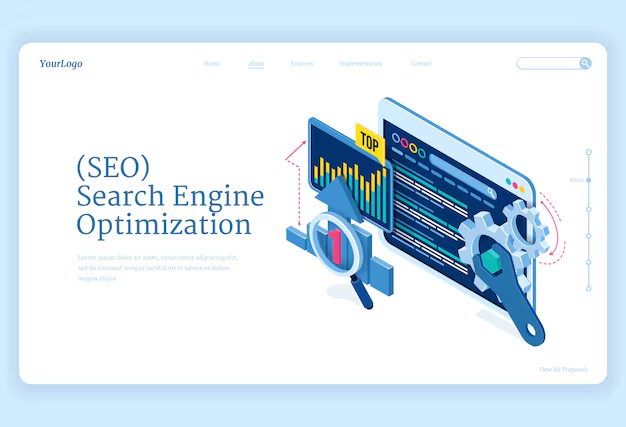
Table of Contents
If you’re ready to take your website to the next level and increase organic traffic, mastering SEO (Search Engine Optimization) is a crucial step. In this guide, we’ll walk you through an easy, step-by-step process to boost your site’s rankings and visibility. The strategies covered here focus on optimizing content, improving user experience, and ensuring search engines can properly index your site.
Let’s dive into how you can make your website SEO-friendly!
1. Keyword Research

Before starting any SEO campaign, identifying the right keywords is essential. Keyword research helps you understand what your target audience is searching for, which allows you to optimize content around these search terms.
Step-by-Step Keyword Research:
- Identify Core Topics: Start by listing the main topics related to your website.
- Use Tools: Tools like Google Keyword Planner, Ahrefs, or SEMRush are great for discovering relevant keywords with high search volumes.
- Analyze Competitors: See which keywords your competitors are ranking for and find opportunities they may have missed.
- Long-Tail Keywords: Target specific, longer search phrases. These are often less competitive but can drive highly targeted traffic to your website.
This is the foundation for your entire SEO strategy, so take the time to do it well.
2. On-Page SEO Optimization

On-page SEO involves optimizing the content and HTML source code of your pages to make them more attractive to search engines.
Key On-Page Elements:
- Title Tags: Ensure each page has a unique, descriptive title containing your focus keyword (e.g., “How to Do SEO for Websites”).
- Meta Descriptions: Write compelling descriptions for each page, summarizing what users can expect when they visit.
- Header Tags (H1, H2, etc.): Use headers to structure your content and make it easier for both users and search engines to navigate.
- URL Structure: Keep URLs short, descriptive, and keyword-rich.
- Keyword Placement: Use your keyword in the first 100 words of your content, and naturally throughout the text, maintaining a keyword density of around 1.5%.
- Image Alt Text: Optimize your images with relevant keywords in the alt text to improve accessibility and ranking in image search results.
3. Content Optimization

Content is king in the digital world, but it’s not just about having a lot of content—it’s about quality and relevance.
How to Optimize Content:
- Create Long-Form Content: Studies show that long-form content (1,500+ words) tends to rank better in search engines. Aim to create in-depth, informative articles.
- User Intent: Make sure your content addresses the user’s intent behind the search query. Is the user looking for information, a product, or a solution?
- Internal Linking: Link to other relevant pages within your website to help search engines understand the structure and relationships between your pages.
- Avoid Duplicate Content: Always ensure your content is original. Duplicate content can lead to penalties or lower rankings.
4. Technical SEO
Technical SEO focuses on the backend structure of your website to ensure that search engines can crawl and index your site efficiently.
Key Factors:
- Mobile Optimization: With Google’s mobile-first indexing, ensure your website is fully responsive and performs well on mobile devices.
- Site Speed: Slow websites are penalized by search engines. Use tools like Google PageSpeed Insights to test your site’s performance and make improvements.
- Sitemap and Robots.txt: Submit your sitemap to Google Search Console and ensure your robots.txt file is configured to guide search engines on which pages to crawl.
- SSL Certificate: Having a secure website (https://) is crucial as Google prioritizes secure websites in its rankings.
5. Off-Page SEO
Off-page focuses on building your website’s authority and trustworthiness through external factors.
Key Off-Page Techniques:
- Link Building: Obtain high-quality backlinks from authoritative websites. This can be done through guest posting, creating shareable content, and building relationships with influencers in your niche.
- Social Media: Engage with your audience on social media platforms to drive traffic and build your site’s authority.
- Local SEO: If you have a local business, make sure to optimize for local search by creating a Google My Business profile, and getting listed in local directories.
6. Tracking and Analytics

Once you have implemented your strategies, it’s essential to monitor the performance of your efforts.
How to Track SEO Success:
- Google Analytics: This free tool helps track your website’s traffic, bounce rates, and conversions.
- Google Search Console: It provides detailed insights into how your site is performing in search results, indexing issues, and keywords driving traffic.
- Keyword Rankings: Regularly monitor your rankings for target keywords and adjust your strategy as necessary.
7. Ongoing SEO Maintenance
SEO is not a one-time task but a long-term strategy. The digital landscape is always evolving, so you need to stay updated with the latest SEO trends and algorithm updates.
Ongoing Tasks:
- Content Refresh: Regularly update older content to keep it relevant and useful for users.
- Monitor Algorithm Changes: Stay informed about Google’s algorithm updates and adjust your strategy accordingly.
- Regular Audits: Perform frequent audits to identify and fix any issues that may hinder your performance.
Conclusion
By following this step-by-step SEO guide, you can build a solid foundation for your website’s visibility and performance. Remember that SEO is an ongoing process—stay patient and persistent, and you will see results over time. From keyword research to on-page optimization, technical fixes, and off-page strategies, mastering SEO is key to improving your site’s search engine ranking and driving organic traffic.

Add a Comment